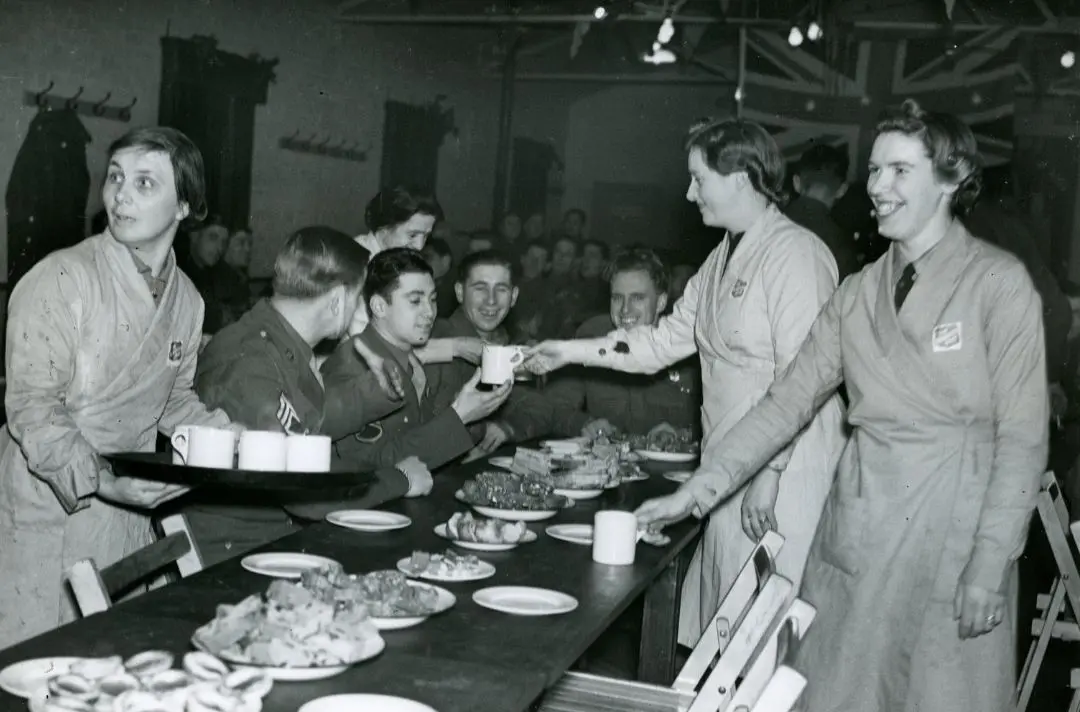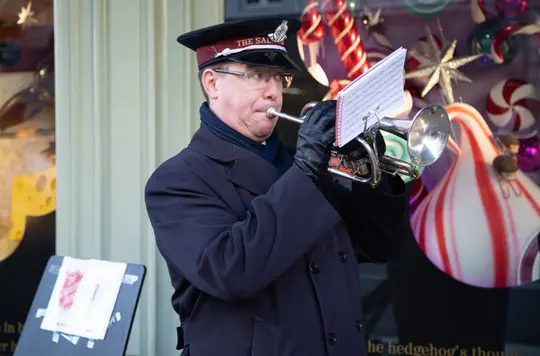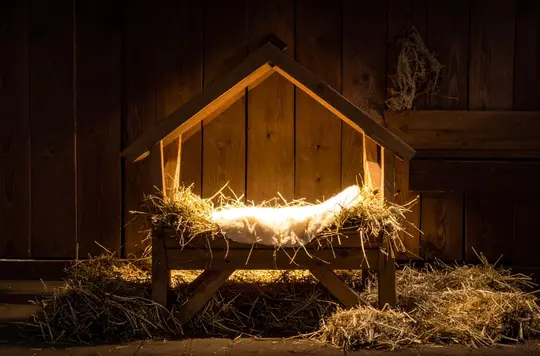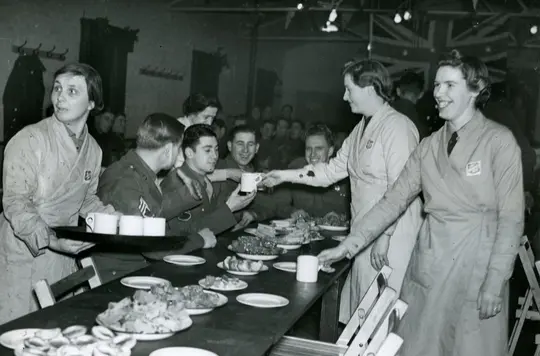4 November 2025
A force for good
Steven Spencer

As millions gather to remember those who have died serving their country in the armed forces, Steven Spencer, director of The Salvation Army’s International Heritage Centre, reflects on the work of the Army during the Second World War.
At the outbreak of the Second World War in September 1939, The Salvation Army was active in 97 countries, including all the main combatant nations, such as Germany, Japan, France and Great Britain.
With members fighting on all sides in the conflict, The Salvation Army made a commitment to maintain a politically neutral stance, and its international leader, General George Carpenter, let it be known that he would not use the word ‘enemy’, nor would it appear in Salvation Army publications.
However, Salvation Army activities were severely restricted in all countries occupied by Nazi Germany. In Germany itself, the war years had a crippling effect.
Salvation Army church leaders were conscripted for military service, property was seized and fundraising banned. The Salvation Army was completely suppressed in Estonia, Italy, Japan, Korea and Latvia.
It became increasingly difficult for The Salvation Army’s International Headquarters in London to maintain contact with its churches and centres in countries under Axis control, so neutral Sweden became a channel for administrative communication within Europe.
In 1941, Swedish officers Commissioner Karl Larsson and Adjutant Erik Wickberg decided to sever all contact with London to allow better communication with their colleagues on the continent, and Sweden became a de facto headquarters for mainland Europe for the remainder of the war.
The first British mobile canteen had arrived in Berlin by May 1945 and by August there were 12 Red Shield clubs operating in Germany.
At the beginning of the war, Salvation Army officers assisted in the evacuation of children from London, while all Salvationists were encouraged to make ‘comforts’, such as socks and gloves, to send to members of the armed forces serving abroad.
The challenges on the home front were also acknowledged, and the War Cry set up a pattern service which provided clothing designs to be made at home. A war comforts department was established which developed a network of 100 branch depots and hundreds of distributing agents throughout Britain.
Nicknamed the Generosity Warehouse, the department distributed garments to civilian war victims, along with sleeping bags, bedding, boots, shoes and, for children, Christmas boxes.
As war raged on, there was a personal cost for many Salvationists. Brigadier Mary Climpson was working in France before the German invasion of 1940. She was being evacuated when her car was attacked by German planes near Dieppe and she was killed.

Colonel Mary Booth was serving with The Salvation Army in Belgium when Germany invaded. She was thought to be a spy but was later moved to the civilian internment camp at Liebenau, where she remained until 1942.
Many members were interned by the Japanese in southeast Asia, including 14 Salvation Army ministers at Changi camp in Singapore. There were also several other Salvationists imprisoned in Changi who established their own Salvation Army church inside the camp.
Wartime restrictions meant that no new Salvation Army halls were built until well after the end of the war, and paper rationing led to the reduction in size of the organisation’s publications.
The Salvation Army itself was a victim of the Blitz – its headquarters in the City of London was destroyed in May 1941. The William Booth College in south London was used as a temporary HQ for the remainder of the war.
As religious ministers, Salvation Army officers were exempt from conscription. A small number resigned during the war years to enable them to join the armed forces, and at least two of them served with British Intelligence.
Some Salvation Army officers were appointed to work as welfare officers from 1941, certificated by the government war office. They looked after the spiritual needs of British Salvationists in the armed forces. The Salvation Army had long opposed militarism, and some senior officers were supporters of pacifism.
A number of Salvationists were granted exemption from military service on conscientious grounds. International Headquarters gave guidance to those Salvationists who wished to refuse conscription at a military service appeal tribunal. Officers could be asked to appear at these tribunals in support of them.
As the tide of the war turned against the Axis powers, a postwar relief department was established to co-ordinate The Salvation Army’s relief work in occupied Europe.
This was part of the Council of British Societies for Relief Abroad (CBSRA), which co-ordinated relief teams run by a variety of voluntary organisations.
A number of Salvation Army relief teams or sections were attached to the British Army of the Rhine (BAOR) and worked with civilian populations in France, the Netherlands, Germany and Austria. Their work included maintaining camps for internally displaced people.
A home for children was opened at Lesse, a holiday home for children called Sunnyside at Tralau and a maternity home in Berlin to replace one destroyed by Allied bombing.
As the international Salvation Army had been separated by the years of war, the work of the organisation helped to reunite Salvationists from across Europe.
In the War Cry of 21 July 1945, British Salvationists reported back from Lubeck on the first joint worship with German Salvationists since 1939.
Written by

Steven Spencer
Director, International Heritage Centre











